Textile Lashing Chains Making Cargo Securement more Efficient at Bay Crane
In this article on cranehotline.com you read about Bay Crane and their use of our textile chain DoNova®. Show the full text by clicking here or the photo below.
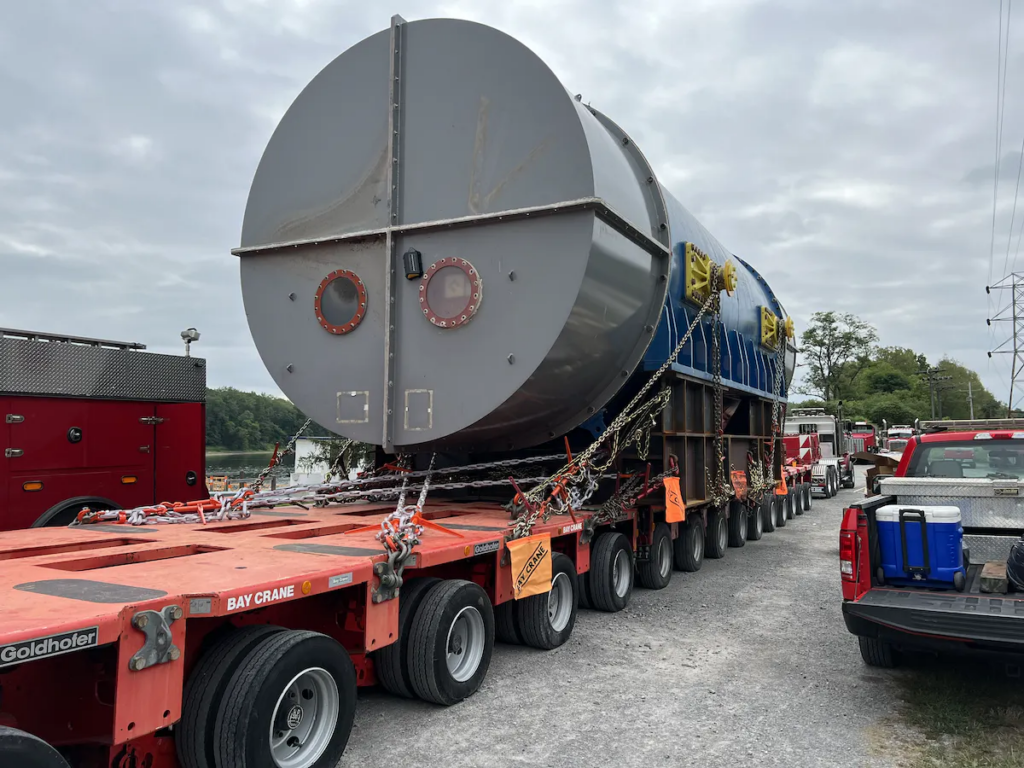

In the latest issue of American Cranes & Transport Jesse L. Krum, Transportation Projects Manager for Bay Crane, writes about the use of the Doleco textile chains and the cooperation with Doleco’s managing director Ralph Abato. You can check out the full issue here.
Our managing director Ralph Abato published an article in the latest issue of “Fleet Equipment” to offer some insight on cargo securement tips ahead of the International Roadcheck 2023. Head over to the “Fleet Equipment” website to brush up on your knowledge about cargo securement and read the full article here.

Source: www.fleetequipmentmag.com
The perfect application for the DoNova® PowerLash! The company Bolk Transporte from the Netherlands is faced with the challenge of transporting four huge storage tanks, each 38 yards in diameter and almost 22 yards long, from Germany to Luxembourg.
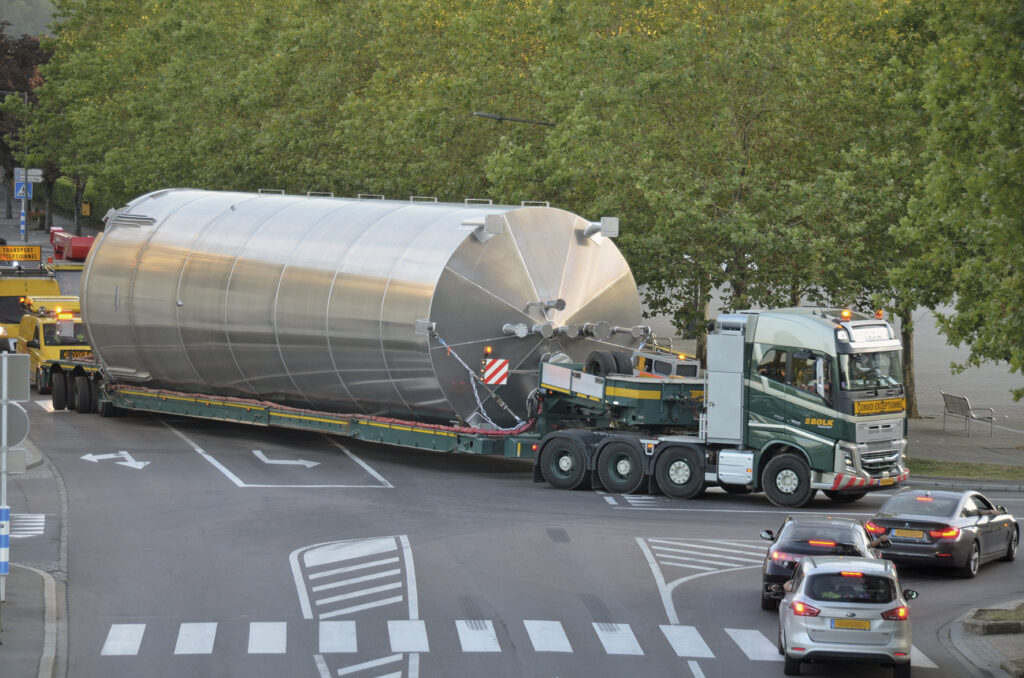
The task list is long: To ensure that the XXL transport can master sharp curves and traffic circles, individual roads are closed and temporary parking bans are imposed in view of the special dimensions. Cafés and restaurants have to relocate their patios and outdoor seating, and the rest of the traffic is temporarily diverted. The transport company is using special low-loading vehicles, known as tank gantry cranes, to be able to pass under bridges on the way to the port.
The huge stainless steel tanks are secured with our DoNova® PowerLash textile chain. Thanks to its outstanding properties, the valuable cargo is well secured: The chain made of the high-performance fiber Dyneema® is as light as a feather, but secures the storage tanks, which weigh several tons, in a very strong manner.
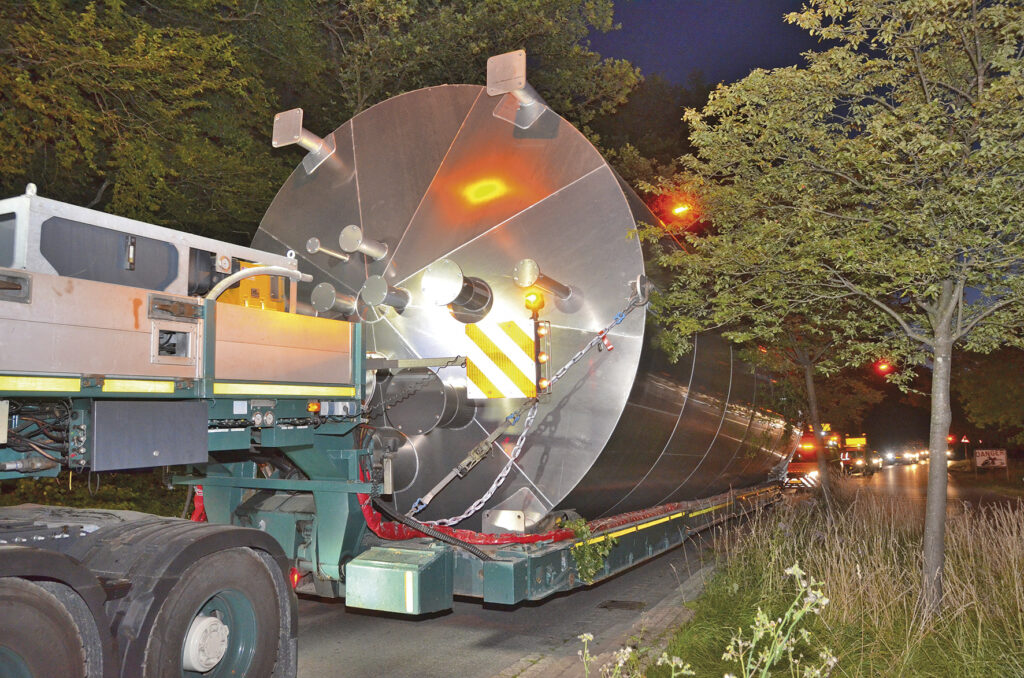
We are pleased to be able to make the world of transport simply safer with our textile chain: Easy and back-friendly work when securing loads thanks to the chain’s low weight and guaranteed safety for the load thanks to certification and strict testing.
If you also want to secure your load simply and easily, contact us. Together we will find the best solution.
Michael Beckert is the site manager at Fritz Heidel OHG in Glött in Bavarian Swabia. Since March 2020, he has been using our DoNova® PowerLash textile chain and the DoRa ratchet load binder optimized for the DoNova®.
Time enough to put our patented textile chain made of the high-performance fiber Dyneema® to the test.
We are pleased that Mr. Beckert took the time for an interview with us and shared his experiences with the DoNova® PowerLash.
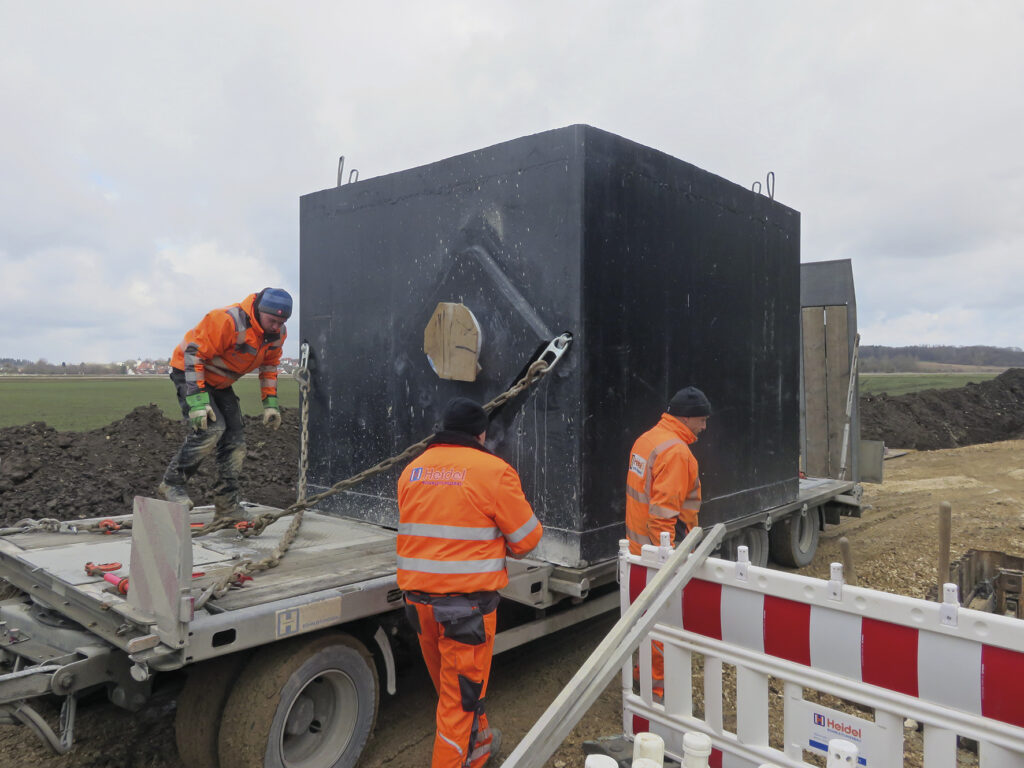
Mr. Beckert, how long have you been using the DoNova® in your company? Are you satisfied with the product?
We are very satisfied. We were looking for an alternative to heavy steel chains. I had heard the term “Dyneema chains” for the first time at a trade show. Your field service manager, Mr. Längle, then informed us that the DoNova® was part of your standard product range.
Is the DoNova® fixed on a vehicle or is it in use in various situations?
We decided to give the chain a try. So, we have been using it since March 2020. Normally, we have the textile chain for the heavy lumps on our large low-loader. Of course, there are exceptions.
Are there other advantages besides the significantly reduced weight?
Ultimately, the focus was that we wanted to give our employees some relief. When the truck driver is alone, he really starts to sweat when he has to handle steel chains and hooks. Then he has to lash them down – that’s all quite strenuous. With the much lighter DoNova®, this is considerably more easy.
Load securing is also faster with the textile chain. For example, the DoNova® can be easily shortened using the chain links with hooks. If you have a steel chain there, you always have more difficulties with a chain shortener.
Is there any feedback from colleagues?
Yes, they are happy too. Colleagues say it all fits.
You were kind enough to provide us with pictures as well.
In these pictures you can see how a water shaft is secured for a larger water pipeline. The water pipes are connected in the shafts. Additionally, there are still tapping points and vent lines.

Was that a particularly difficult challenge?
The dimensions were special. But the weight of the water shaft is similar to that of a large construction machine. The shaft weighs about 20 tons. Our large crawler excavator is about 22 tons.
Mr. Beckert, normally where there is shadow, there is light. Have you or your colleagues been able to discover any disadvantages of the DoNova®?
Not really. We were told that the only thing to avoid is dragging the DoNova® on the ground behind you. The fibers could break. That’s what we’ve instructed our employees to do.
When I look at the chains now, after 2 years: They are no longer as nice and light gray as they looked when they were delivered. They have had their 2 years on the building site since then. They have become a bit darker. But otherwise they still look really good.
Our biggest fear was that the chains quickly splice or that the fibers would hang down, so you have to throw them away quickly. But that has not been confirmed. They can really take a beating.
Would you recommend the DoNova® to others?
Unreservedly yes! We have already ordered new chains with your new DoRa ratchet tensioners, which are already in stock here. We will probably also equip the small low-loader with them.
Mr. Beckert, thank you very much for your time and the interview!
Grasp, try out, experience with all senses – that was the motto of our internal employee product training. All coworkers should be able to experience the interaction of the new telescopic ratchet load binder DoRa with the DoNova® textile chain.
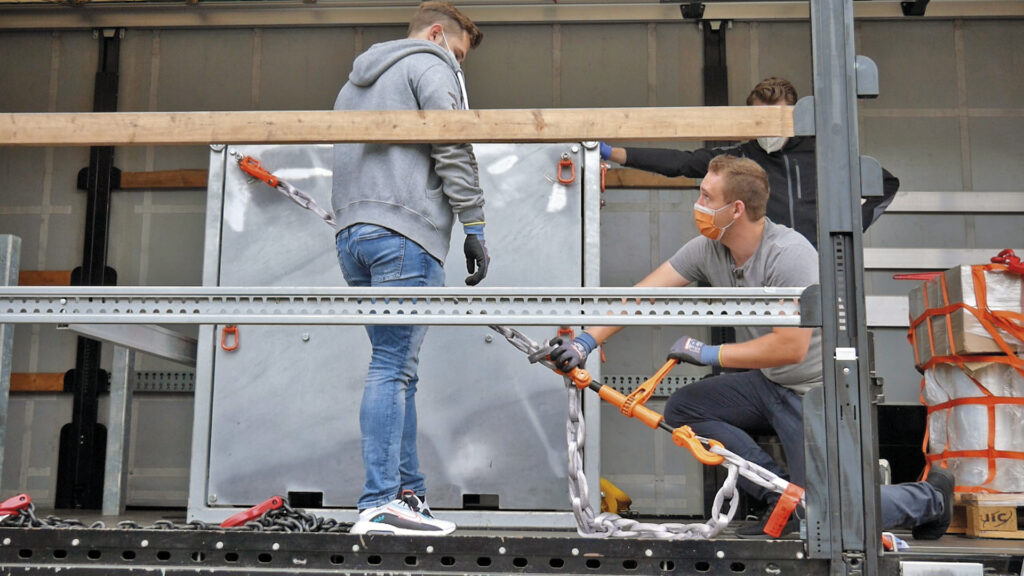
For this purpose, a training trailer was prepared on our company premises. First, a steel chain was tensioned with a standard binder, then our textile chain with the DoRa binder. In teams of two (Covid-tested and with masks) we were able to understand and – literally – experience for ourselves how much easier and more efficient load securing can be when the right products are used.
We learned:
Whenever I come to the ropery, I feel as if I have entered a very special world. A distinctive smell hangs in the air, it is a mixture of steel and grease. The roar of the machines and the sound of a hammer can be heard. The main role here is played by steel cables – meters long, thin, and thick, shiny or matt.
They lie coiled on large wooden reels on the shelf, waiting to be processed. In contrast to the fine ropes workshop next door, in which delicate work is required on ropes from 0.8 to 6 mm in diameter, steel ropes from 6 mm in diameter are processed in the rope shop. In addition to a lot of know-how, real strength is also required.
Making ropes is craftsmanship in the literal sense of the word. 12 colleagues are currently employed here, and young talent is hard to find. Most of the colleagues in the rope factory have been with the company for a long time, some of them for almost 50 years!
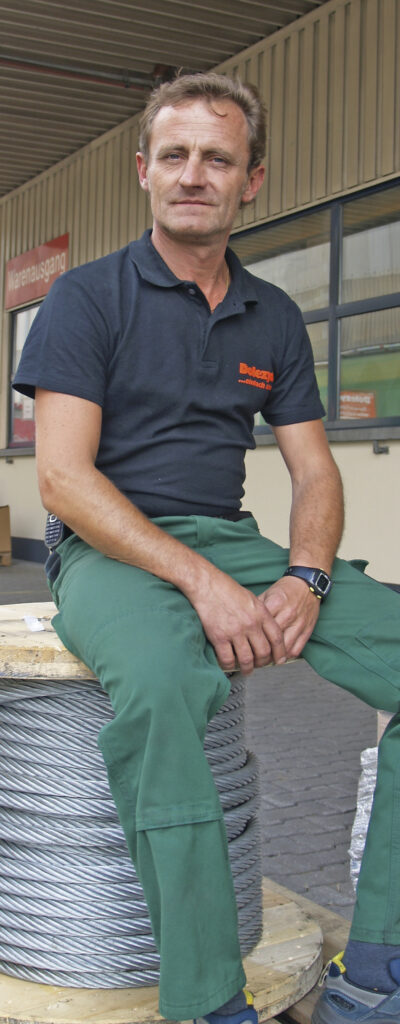
Waldemar Ptok is the master of the ropes. He has been working in the Dolezych rope factory for 31 years, starting as an apprentice. In no time at all he shows me how to make a Flemish eye, a particularly safe and long-lasting wire rope connection for sling ropes. It is a relatively thin rope of 20 mm with which he demonstrates this to me – upwards of 24 mm rope diameter teams of two must work on the rope. This rope termination is possible for ropes between 8 mm and 32 mm.
Flemish eyes are particularly safe. This is due the special way in which they are made, but also attributable to the fact that in Germany, steel ropes with a steel core (instead of a fiber core) and a steel ferrule are usually used for Flemish eyes. The steel core makes Flemish eyes particularly suitable for use in hot areas up to 400° Celsius. A fiber core would burn at these temperatures – undetectable to the user. Consequentially, the rope would become hollow inside. The fiber composite would collapse and would therefore no longer be able to support the load. The specified load capacity of the rope could then be negatively affected. However, this danger may not be noticed during a visual examination!
Due to the eyelet formation by splicing and crimping, the Flemish Eye offers 100% safety for the minimum breaking load for all 6-stranded constructions. The special design of the of the Flemish Eye guarantees a symmetrical distribution of the force. A steel pressure clamp ensures that Flemish eyes are more wear-resistant than ropes with aluminum pressure clamps.
The slim, conical shape of the steel ferrule, which tapers towards the bottom, prevents the rope from snagging when pulled under loads or when bundling. The Flemish eye is 100 percent manual work! Splicing the rope, reconnecting the strands in opposite directions as an eye and then to evenly wrap the strand ends around the load-bearing rope so that the steel clamp can be slid over it – yes, this is where pure rope craftsmanship is required!
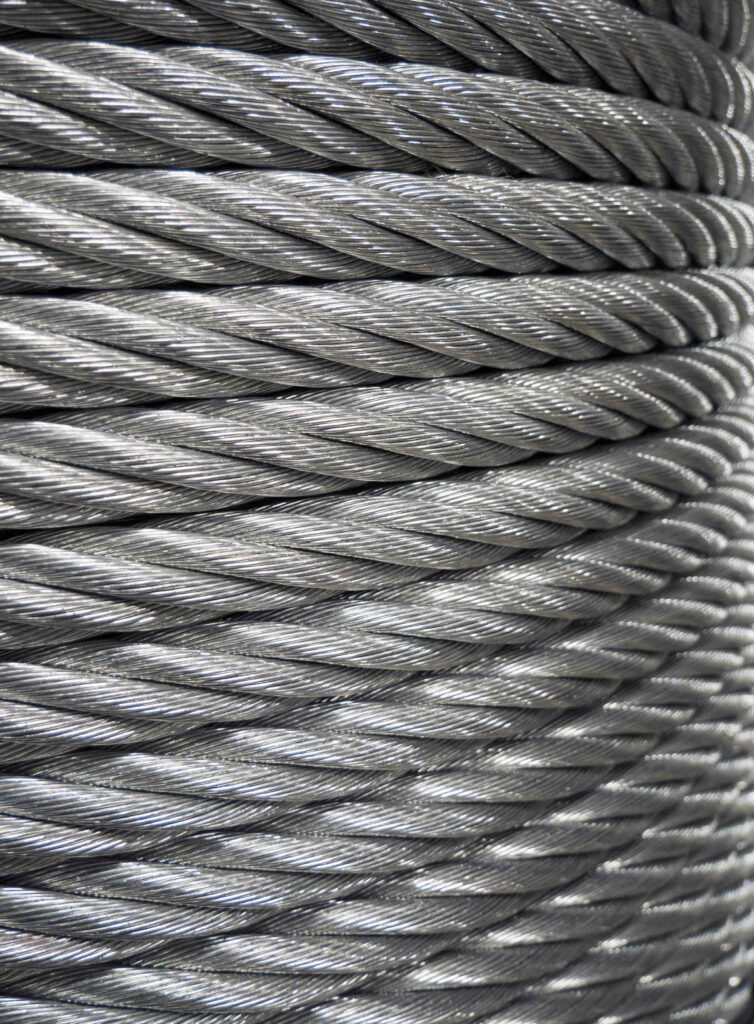
Waldemar Ptok estimates that it takes two to three months before the individual steps are really internalized. “You have to repeat the process over and over again, it takes practice.” With 31 years of experience, it looks foolproof, but I, for whom these steps are still new, get lost in the individual strands. “Simply bending” doesn’t work, steel needs muscle power and a Flemish eye requires a particularly structured approach.
No wonder a lot of training is needed for this. But this work and the responsibility that goes with it satisfies Waldemar Ptok. The ropes with the Flemish eyes are tested in our test laboratory, as are all our products so that safety is guaranteed.
The visit to the rope factory has (once again) impressively shown me the responsibility that the colleagues in production bear every day. As in our other production departments, it became clear to me that the human hand is irreplaceable for some processes and that this is what makes the products unique.
We have captured the operations in the ropery photographically.






Our lashing straps are part of the most spectacular current art installation: The wrapping of the Arc de Triomphe in Paris 2021!
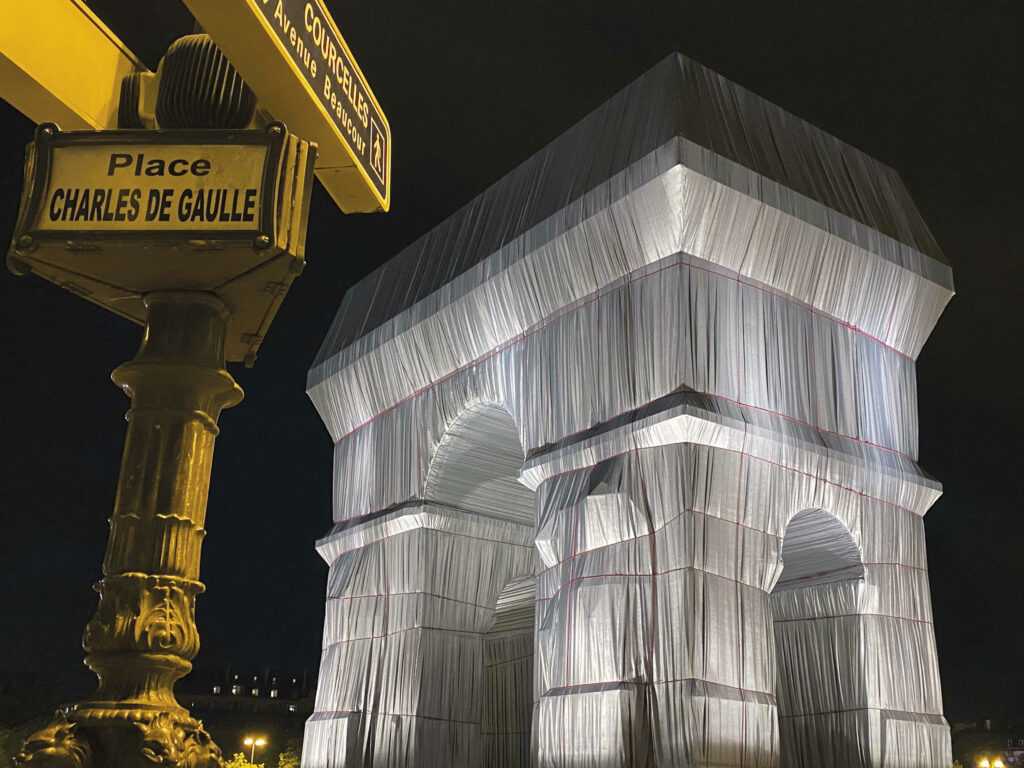
More than 2.600 lashing straps in the special colors silver-grey and orange were supplied to the Christo project-team. Silvia Bauer from our sales team made sure that everything ran smoothly and was organized perfectly. Our lashing straps held 25,000 square meters or 15 tons of silver-grey fabric to the scaffolding construction and were responsible for the fact that people from all over the world could admire the covered French national monument.
The Parisian landmark, which was erected between 1806 and 1836, could be discovered in a new way for 16 whole days from September 18th to October 3rd, 2021. The posthumous installation – Christo died in May 2020 – is a tribute to Christo and Jeanne-Claude and at the same time the realization of Christo’s last wish, which he even mentioned in his will. If the Corona pandemic had not intervened, the project would have been realized as early as spring 2020. Already in 1961, Christo and Jeanne-Claude had the idea of covering the Arc de Triomphe. The couple were living in Paris at the time.
60 years later, the vision became reality: A substructure protected the historic building, and the shimmering silver-grey fabric covered the monument. Invisible for the most part, but indispensable: our lashing straps! These made sure that the heavy fabrics were properly secured in place. They were ordered in special colors, a fact that Christo had planned in detail before his death.
A lashing strap was needed every 50 cm. Silver-grey lashing straps held the fabric tarpaulins to poles, secured the scaffolding and connected the fabric with the scaffolding. Orange lashing straps, 100 mm wide, were responsible for securing the Arc de Triomphe.
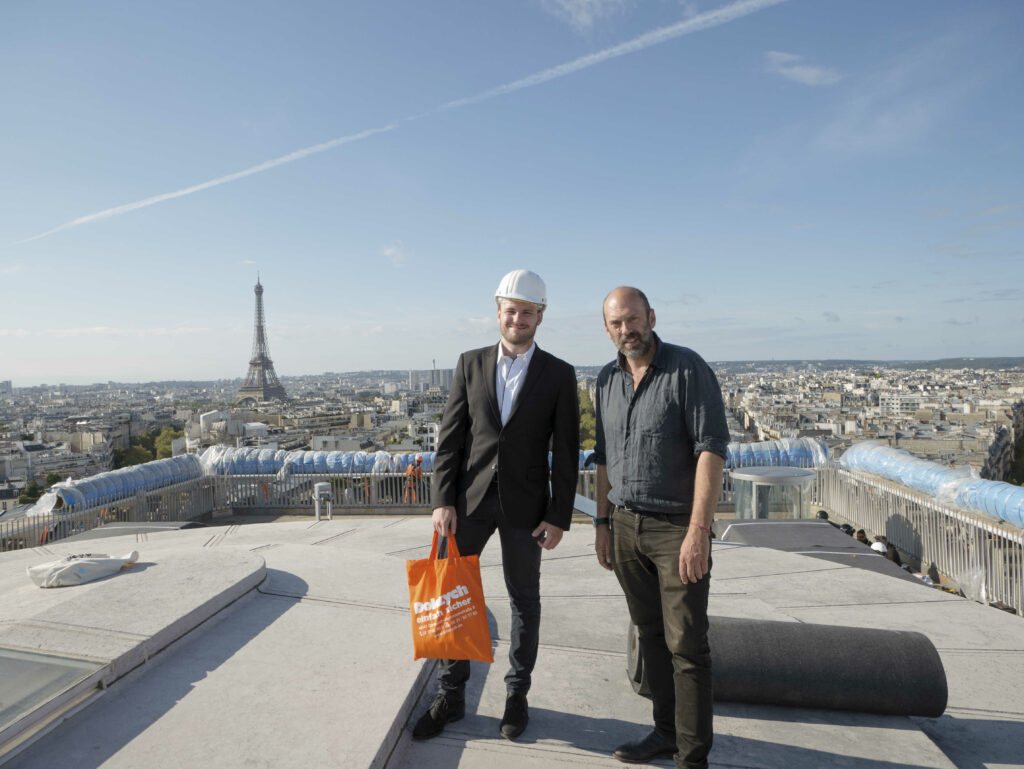
Our head of business development, Sven Wasik, was on site on the weekend of the actual wrapping. The magic word “Vladimir Yavachev” opened the well-guarded site for him. Yavachev is Christo’s nephew, one of his closest confidants for years, and the project director for the veiled Arc de Triomphe. He finally brought Sven Wasik to the to the very top of the roof of the Arc de Triomphe.
Wasik’s impression: Gigantic! Our lashing straps dominated the picture on the day before the final wrapping. The entire project family is happy. About the project itself, of course but also happy that our lashing straps on site held everything together. “Your straps saved my ass!”. With this, Vladimir Yavachev thanked Sven Wasik impressively, after the work was done and when the first small roof was completely covered.
Of course, Udo and Tim Dolezych also wanted to experience this outstanding project in person. Together with our Deputy Managing Director Karl-Heinz Keisewitt the Dolezych crew set off for Paris on the last weekend of September. On site they were impressed by the overwhelming project. The Arc de Triomphe shimmered in all its facets from reddish in the morning to silver-grey blue in the sunshine to dark gray in the evening. Also, the view of Paris from the roof of the veiled work of art was also breathtaking.
The knowledge of the inside of the art installation, of the fact that Dolezych lashing straps made all this possible in the first place, fills all three of them with pride. Proud, of having been part of an extremely impressive art installation with products from Dortmund.
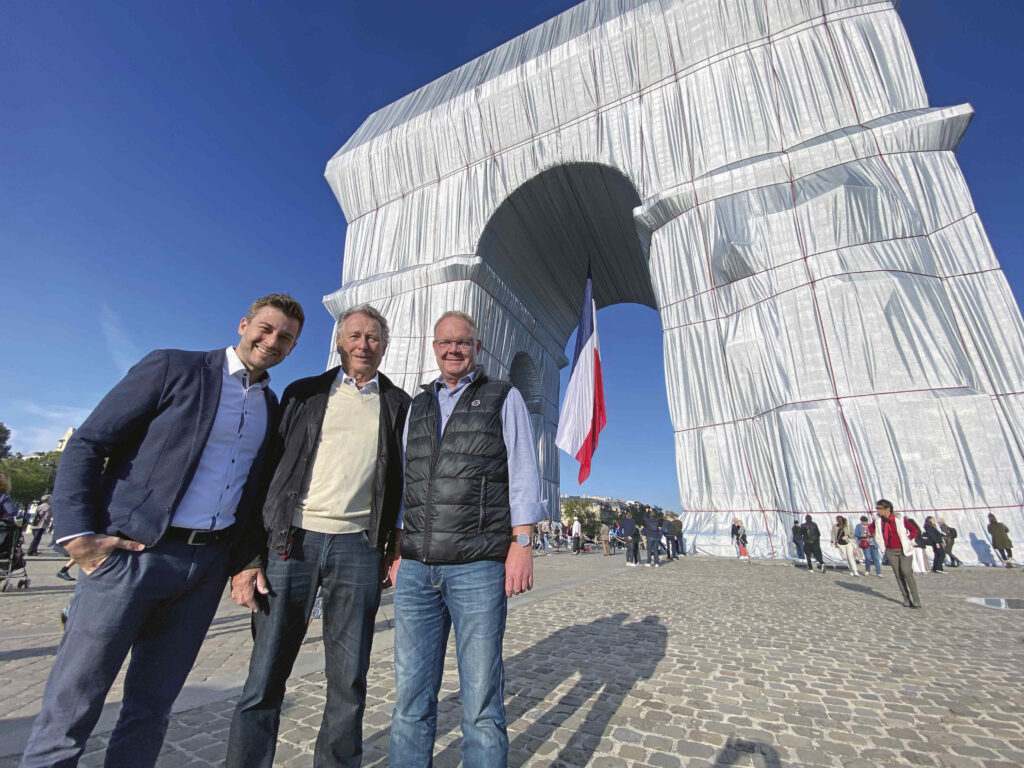
“We are very happy that our family business could be part of this spectacular wrapping. Similarly to the Berlin Reichstag, (editor’s note: 1995 “Wrapped Reichstag”: Wrapping of the German Parliament in Berlin by Christo and Jeanne-Claude) we experienced the Arc de Triomphe in a completely new way. Another fascinating experience, that makes you want to do more art projects!”